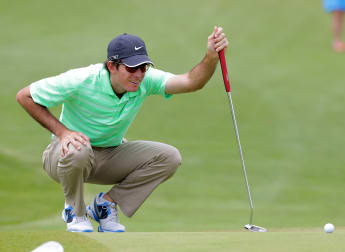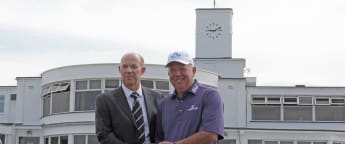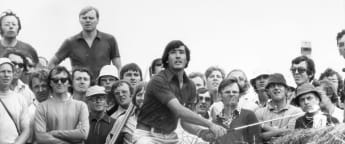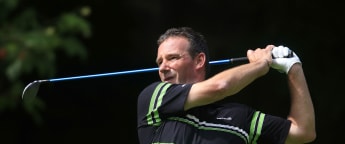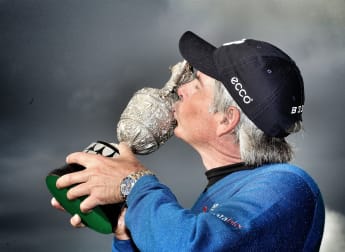The famous Southport links of Royal Birkdale this week becomes the 11th different host venue of The Senior Open Championship Presented by Rolex. As the first day’s play progressed, europeantour.com got the inside track on this legendary layout…
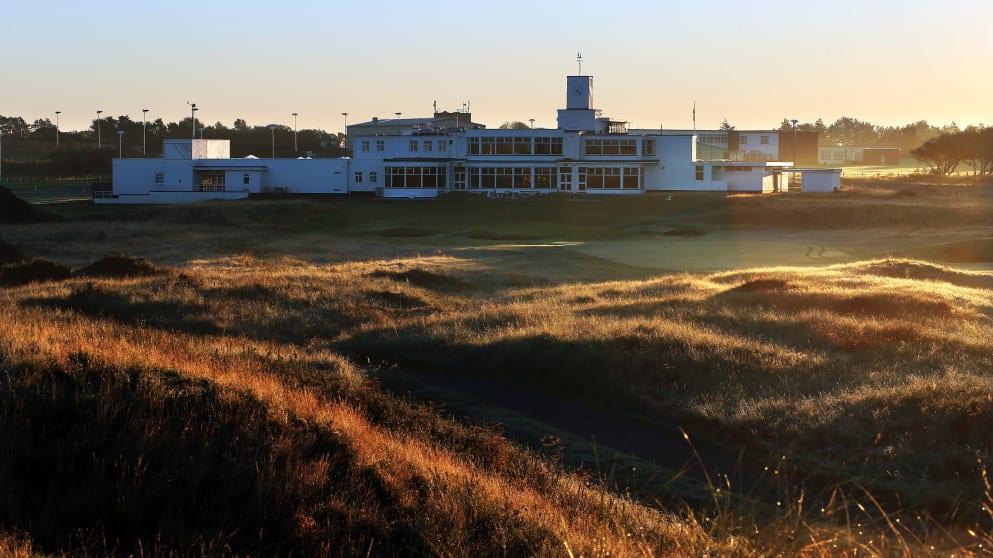
Club Overview
Founded as Birkdale Golf Club in 1889, the club moved to its current site in Birkdale Hills in 1894. The club hosted its first major event in 1946 as The Amateur Championship came to Southport and Birkdale was awarded ‘Royal’ status five years later. Since then, Royal Birkdale has hosted nine Open Championships – the first in 1954 won by Australian Peter Thomson and the latest in 2008 when Padraig Harrington prevailed – two Ryder Cups, five Women’s Open Championships, a Curtis Cup and a Walker Cup.
Three generations of the Hawtree family of golf course architects have worked on the course in its almost-125 year history: Frederick G. Hawtree and former Open Champion JH Taylor being the primary designers in 1922; Frederick W., son of Frederick G., made some updates in the 1960s; while Martin, son of Frederick W., rebuilt all 18 greens following the 1991 Open.
The Course
Playing this year as a 7,082-yard par 70, the venerated links of Birkdale certainly proved a popular choice when they were announced to host The Senior Open this year. Particularly with a certain Tom Watson, who won his fifth and final Open Championship here thirty years ago. “Royal Birkdale is one of my favourite courses on the Open rotation,” said the American legend. “It truly is and not just because I won there but it's because I really like the design of the golf course. It has a variety of holes to it. It's like Muirfield, which I’d put in the same category. The variety of directions this holes play - that's part of why I like certain golf courses and Birkdale certainly fits right in there.”
Talking of Muirfield, the Gullane venue which hosted The 142nd Open Championship last week, one man is in the unique position to directly compare the inner workings and course supervision of both of this year’s regular and Senior Open courses. Chris Whittle, Course Manager at Royal Birkdale, previously worked at Muirfield for six years before joining the Southport links in 1994 and said that this week would present a somewhat different challenge to the scorched and liquid fast East Lothian layout.
“We’ve had a fair bit of rain the last few days so it’s a lot wetter than Muirfield was,” said Whittle. “How it will play will reflect that weather, so although they will still be fast the fairways won’t be running as far and the greens will probably be a little slower. The biggest difference I would say, having worked at both, would be the climate difference between the two places: 220 miles apart and the other side of the country as well so the whole weather patterns are different. That obviously affects everything we do and when we do it so it’s mainly just timing jobs to suit.”
Tom Watson’s key Birkdale holes
“It’s the topography that separates Birkdale,” said 1983 Open Champion Watson, who this week will attempt to win a third Senior Open title on a course where he previously won a Claret Jug. “There is more elevation involved in the tee shots and green complexes like the sixth green which rides up out of the dunes. The western side of the golf course is just lovely, playing along the dune structure down there which is just gorgeous.
“The 12th is one of my favourite par threes in the world. The first time I played that hole I looked at the green from the tee and I thought: 'Is this a short par four'? The reason was the flagsticks in 1976 were of different heights. That hole had this small three foot flagstick in the green and it looked like it was 300 yards away. Honestly, I couldn't tell. It was actually 180 to the front edge and after that it confounded me. But playing with a right to left wind in between those two dunes is a shot I will always remember. It's a great links golf shot.
“Hole number six always stands out as a key hole to the golf course. It's a dog-leg right. If you can manage to keep your long drive up against the bunker on the right you can have a shorter shot into that long green. It takes two really good shots to get it up on that green. The elevated green just compounds the difficulty of the hole and the right to left wind also does.
“I look at that hole as probably the one hole that is key, but I also look at number one. I look at it with bad memories because the first time I played it in competition in 1976 I made a seven on it and it pretty much knocked my chances of competing successfully to repeat as Open Champion. I always played that hole carefully after that! I learned my lesson.”
The Clubhouse
Though it has received certain updates in recent years, the Art Deco–style clubhouse at Royal Birkdale still retains much of architect George Tonge’s shiplike design. Dry-docked on England’s Southport dunes, the iconic cinder-block structure was opened in 1935. Stuart Fish, 45 years a member and former Birkdale Captain, has been commissioned by the club to update the centenary book first published in 1989 and told europeantour.com: “The design was meant to represent a liner sailing through the sandhills. There used to also be a balcony, a veranda that looked like the rails of a ship. We are very proud of it; it’s an impressive and memorable clubhouse.” The public and media evidently agreed, as one reporter remarked at its inauguration: “Standing on the promenade deck overlooking the Irish Sea it needs little imagination to feel that one is on a cruise.”
Royal Birkdale at war
When the Second World War broke out in 1939, Birkdale was in the process of preparing to stage its first Open Championship the following year. Club Professional at that time was 26 year old Robert Halsall, who was unashamedly excited to be hosting the world’s best for The 76th Open Championship on the course where he had started caddying as an 11 year old. As it turned out, Halsall instead went to war.
And so did Birkdale. The 1940 Open Championship was cancelled, and in fact the infamous Battle of Britain began in the same week the tournament had been set to be held. As Halsall joined the First Battalion of the Cheshire Regiment, his club became an Army training ground with the Home Guard learning their trade on the fabled links, while one of the dunes by the third fairway became an RAF observation post.
While it was nearby Liverpool that suffered most as the Luftwaffe decimated its docklands, the German bombers returning home dropped any excess shells on Southport, mainly aiming for the railway line which runs by Royal Birkdale, and the course was charred and blackened by a number of explosions throughout 1941.
When the war ended in 1945 Birkdale’s professional made it home from the Western front safely. Robert Halsall, who had crossed the Rhine with the Cheshire Regiment, returned to Southport and the club he would remain at until 1979.
In 1954, after 14 long years, The Open Championship finally made its overdue Birkdale debut as Thomson triumphed, finishing a shot ahead of Bobby Locke, Dai Rees and Sid Scott, and clear of a familiar name – 40 year old club pro Halsall.
